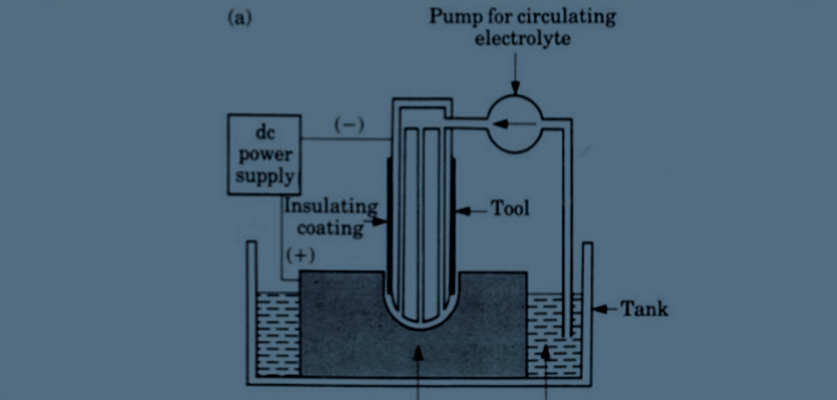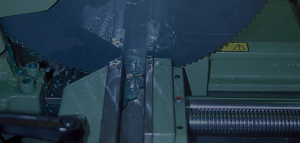Is ECC a good choice for your 2-axis metal cutoff?
Using a combination of electrochemical erosion and grinding, electrochemical cutting (also known as ECC) produces a burr-free, shiny surface to a tight tolerance of ±0.005” (0.127 mm). Like abrasive cutting, the electrochemical method does not cut with saw teeth.
But before you choose an electrochemical cutting machine for your 2-axis metal part cutoff, it is critical to understand the advantages and disadvantages of the process. Only then can you evaluate and decide whether it will meet your needs and priorities.
Electrochemical Cutting Process
In electrochemical cutting, both the workpiece and the grinding wheel are electrically conductive. In the process, a positively charged workpiece in a conductive fluid is eroded by a negatively charged conductive grinding wheel. The most commonly used fluids are sodium chloride and sodium nitrate.
The electrochemical reaction that occurs oxidizes the workpiece surface, removing material. The layers of oxide film that form on the surface are removed by the grinding wheel.
Electrochemical cutting is a balance between unsupported grinding action and electrochemical erosion. It is a trade-off being between the speed of the grinding wheel and the burr removal of the far slower chemical action.
Some Advantages of ECC
Electrochemical cutting can produce smooth edges without the burrs caused by mechanical grinding. In addition, ECC does not produce a significant amount of stress or heat that could damage or distort the workpiece.
With electrochemical cutting, typically 90% or more of the metal is removed by erosion and the rest by the grinding wheel. Therefore, the wheel — which does not physically touch the workpiece — has a long life and can last for many grindings.
The conductive fluid also serves a useful secondary purpose, flushing out leftover material between the grinding wheel and workpiece.
It’s All in the Chemistry
With ECC, the chemistry of the workpiece material affects the process, and vice versa. Of course, due to the nature of the process, electrochemical cutting is limited to electrically conductive materials. And, the method requires a specific chemistry and conductivity for each different type of metal you may want to cut.
That means ECC does not work with all metals. For example, the particular and often slow chemical reactions of materials such as the refractory, noble, and light alloys make them inappropriate for ECC. However, the method does work well with ferrous metals and stainless steel.
On the flip side, if the workpiece is highly reactive and if too much conductive fluid is used, it may be difficult to control the material removal — and that can lead to a loss of accuracy.
Other Downsides to ECC
Compared with thin-wheel abrasive cutting, electrochemical cutting is a slower method. What’s more, ECC is not ideal for very short cuts under 0.125” (3.175 mm). Also, the wheels are wide and therefore, there is a significantly large kerf.
Electrochemical cutting is not appropriate for any circumstance where a dissimilar or dielectric mandrel is needed to support the cutting of tubes. Bundling for multiple parts per cut cycle is possible. However, because erosion occurs as long as there is contact, the bundles have to be carefully constructed to prevent residual erosion from causing unwanted length variations.
The process can also cause changes to the mechanical, physical, and chemical properties of the workpiece. This might include such changes as reduced strength, loss of magnetic property, and susceptibility to corrosion. Composite or coated metals present the insurmountable problems of different erosion chemistries and a dielectric barrier, respectively.
Because ECC is mostly an erosive process, it decomposes the workpiece. In addition, the removed material is left behind in the conductive fluid.
Is ECC Your Best Choice?
Deciding whether to use electrochemical cutting requires an in-depth understanding of your unique application and its specific parameters. Making the best choice also requires an understanding of the different options that are available for 2-axis metal cutoff.
How does electrochemical cutting compare with other precision metal cutting methods? Read on to learn more.






